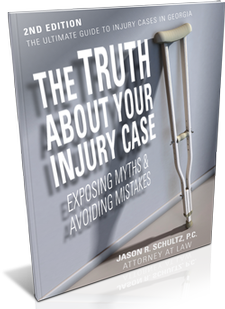Traffic Signals for Pedestrians
Another feature of major intersections is traffic control signals. Most pedestrians are familiar with the red "Don't Walk" or the illuminated red hand. This means you should not be in the crosswalk. If the “Don’t Walk” or red hand is flashing, it means that you should not start to cross the street, as the signal is going to change soon. Some come equipped with a timer to let pedestrians know how long they have to cross.
There are some new pedestrian traffic signals that Atlanta is testing out as part of the Pedestrians Educating Drivers on Safety (PEDS) initiative.
Pedestrian hybrid beacons are signals that alert drivers a pedestrian is about to enter a crosswalk. By pressing a button on the roadside, the pedestrian activates a flashing yellow light visible by incoming traffic. Two solid red lights will then appear to drivers and the pedestrian will see a “Walk” indication. Next, the pedestrian will see a flashing orange hand and drivers will see alternating red lights to signal that the crossing phase is about to end. Then the lights will go dark and regular traffic flow resumes.
Rectangular Rapid Flash Beacons (RRFBs) are another new pedestrian safety signal implemented at intersections where there are crosswalks but no standard signals. Pedestrians who wish to cross the street activate amber LEDs underneath pedestrian crossing warning signs. These flashing lights – similar to emergency flashing lights – signal drivers that a pedestrian is crossing or about to cross, drawing extra attention to an otherwise unsignaled crossing.
Pedestrian Crosswalks and Pedestrian Street Signs and Signals Save Lives
According to the Federal Highway Administration, hybrid beacons may help decrease pedestrian crashes by 69 percent. It cited a study that found the RRFBs may increase vehicles yielding to pedestrians from 18 percent to 81 or 88 percent depending on the number of beacons used.
Pedestrians who utilize crosswalks and follow traffic control devices may improve their safety. These tools identify areas of pedestrian crossing and help alert all who share the road when it is safe to cross or proceed through an intersection or pedestrian crossing area.
Unfortunately, even with improved crosswalk use and better traffic signal technology, reckless and distracted drivers still cause thousands of pedestrian accidents and fatalities every year. If you or a loved one suffered injuries in a pedestrian accident caused by a reckless driver in Atlanta, the Law Office of Jason R. Schultz, P.C. is here to help.
Contact our office today to schedule an appointment for a FREE consultation regarding your legal options after a serious pedestrian accident: 404-474-0804.


